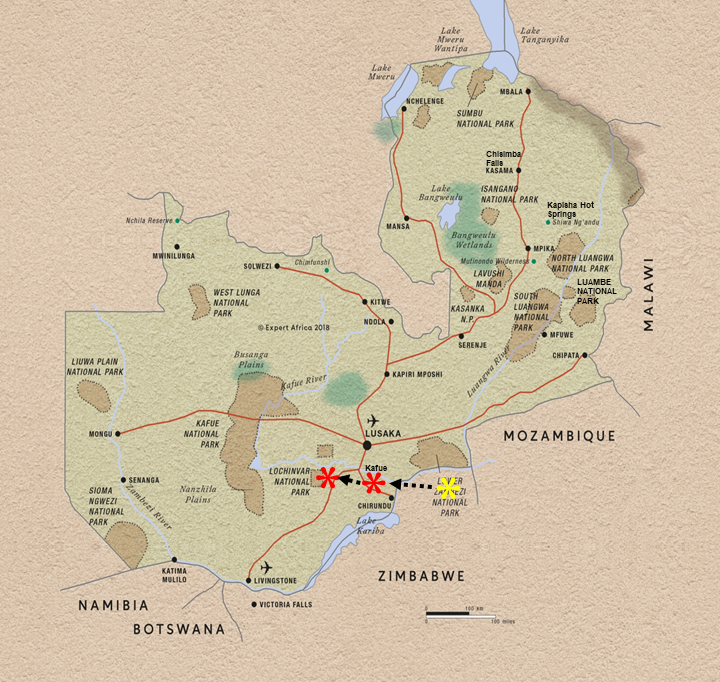
My first destination park in Zambia was the relatively unknown and rarely visited Lochinvar National Park, located southwest of the capital Lusaka and situated on the southern edge of the Kafue Flats, a wide floodplain of the Kafue River. Lochinvar NP (165 sq. mi.), established in 1972, is centered on the river floodplains and the shallow Chunga Lagoon which fluctuates considerably in size with variations in river levels, but the Park also includes extensive marshes, grasslands and wooded uplands as you move south from the river. Kafue Flats is the exceptional ecological feature – much like the Okavango Delta in Botswana – that extends along the river for more than 100 km and is up to 50 km wide in places. The Flats include numerous braided channels of the river along with pools of all sizes, sloughs and extensive abutting marshland and grassy plains that vary from partially flooded to dry in response to the wet/dry annual cycle. Here are a few shots of the ecological gradient from the Kufue flats immediately abutting the marshland to the upland woodlands:
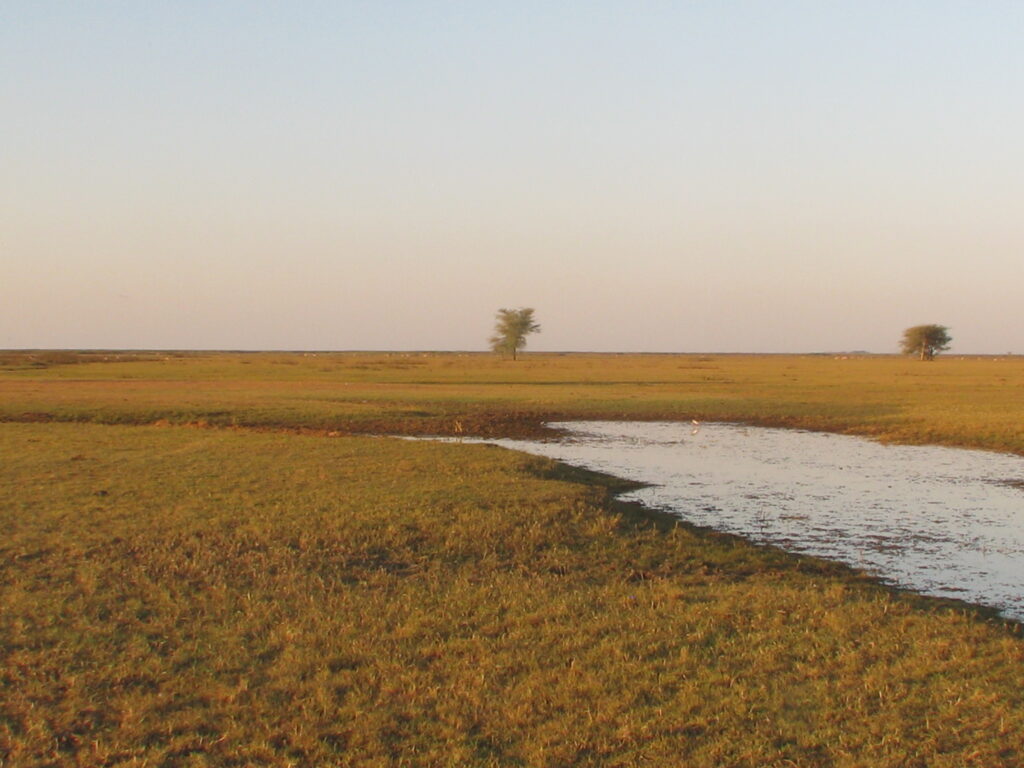

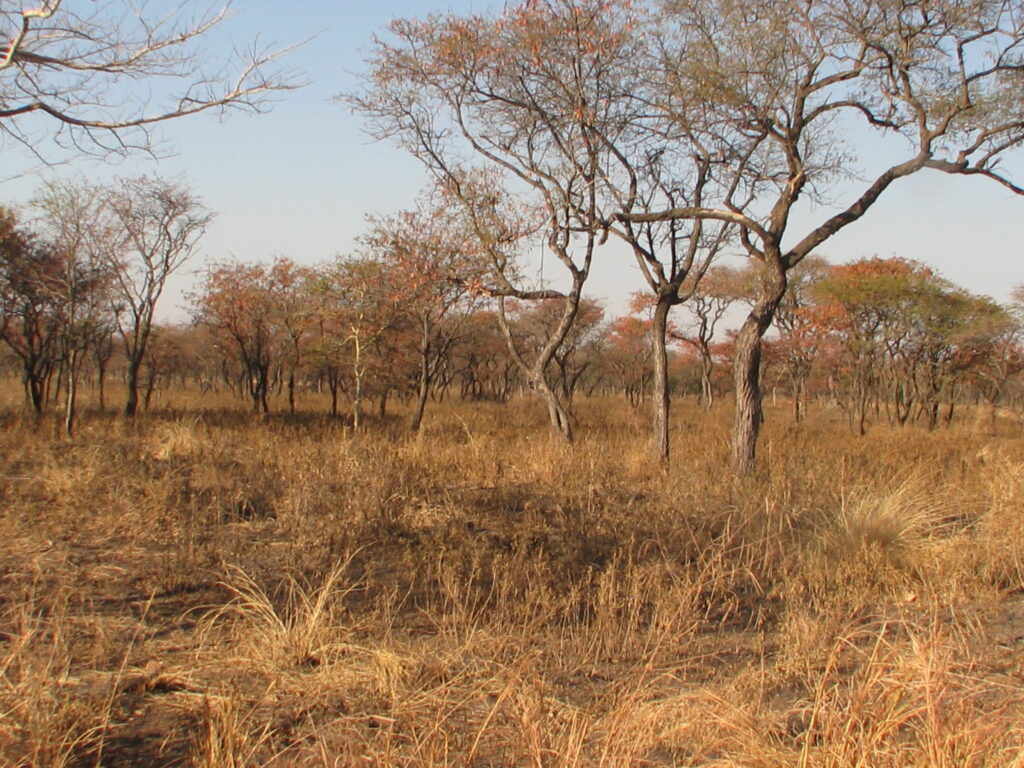
One unappealing aspect of this National Park, at least for my tastes, is that they allow certain commercial resource extraction activities, including a large open-pit gypsum mine in the middle of the Park with heavy hauling trucks going in and out all day and a local commerical fishery by communities located both inside and outside the Park, a boat harbor for the latter shown here:
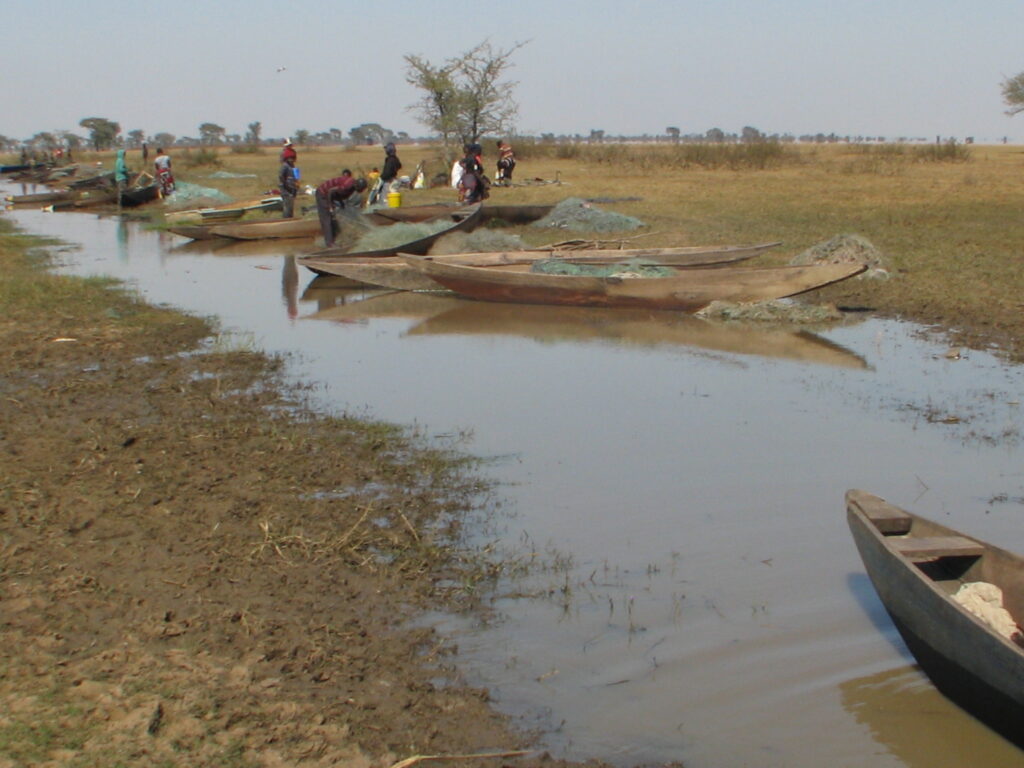
In addition, cattle from the adjacent lands are allowed to forage and access water within the Park, and since the community lands outside the Park are limited in both resources, the cattle make significant use of the Park. To me, it is a bit tragic that a national park has to be used in this way, even though I understand that without these compromises they probably would not have been able to create the Park in the first place, so I guess it is better than not having a Park, but then again I’m not sure in this case what it really means to be a “Park”. It didn’t feel much like a National Park as I passed huge trucks hauling out gypsum and ran into cattle herds on several occasions, including waking up to a herd of several hundred cattle approaching my campsite. Here is the view from my campsite – not what I hope for in a national park:
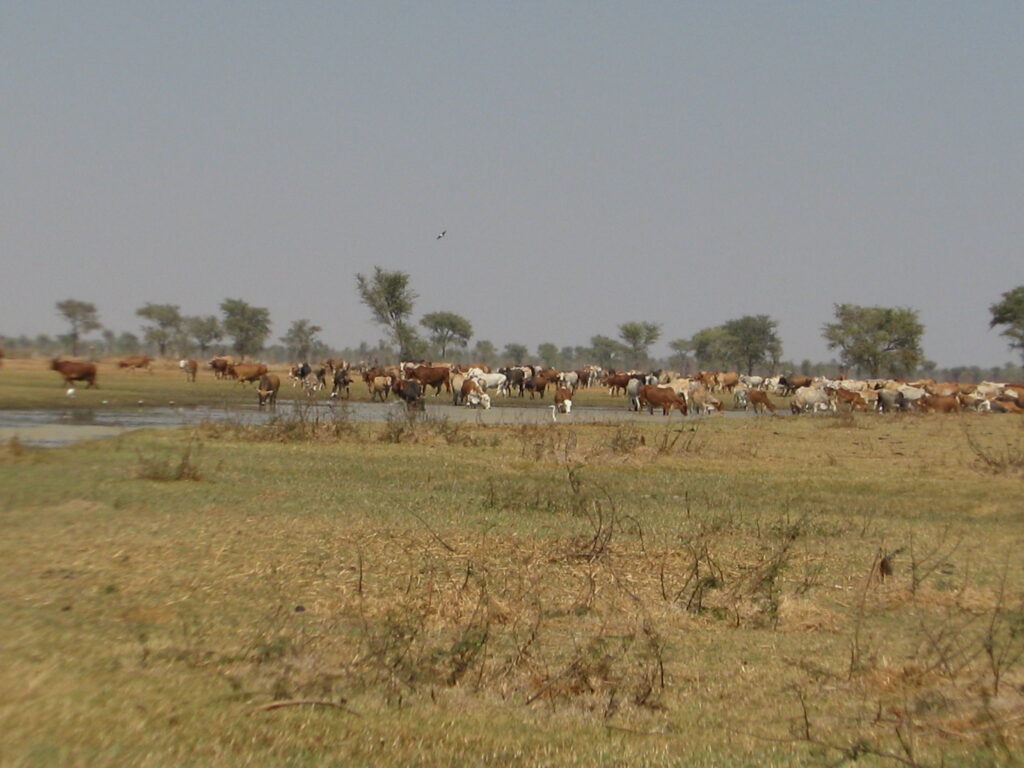
On the flip side, I took advantage of the local fishermen and had one of them take me out into the marsh and lagoon in his boat, as I show in my video below, so I guess I shouldn’t complain too much.
Lochinvar NP is particularly well known for the large herds of Kafue lechwe, an antelope species endemic to the Kafue flats (i.e., it is found here and nowhere else) that reaches numbers in the many thousands. Everywhere I looked on the flats I saw herds of Kafue lechwe.
My campsite was what is referred to as a “bush camp” or “wild camp”, which means it was just a spot that I chose for my campsite but without any facilities at all. I simply drove as far as I could out on Kafue Flats until I hit wet grassland and marsh and stopped next to a tree and slough, set up my campsite (i.e., opened the rooftop of the Green Dragon) and sat back to enjoy the amazing sunset, as shown here:
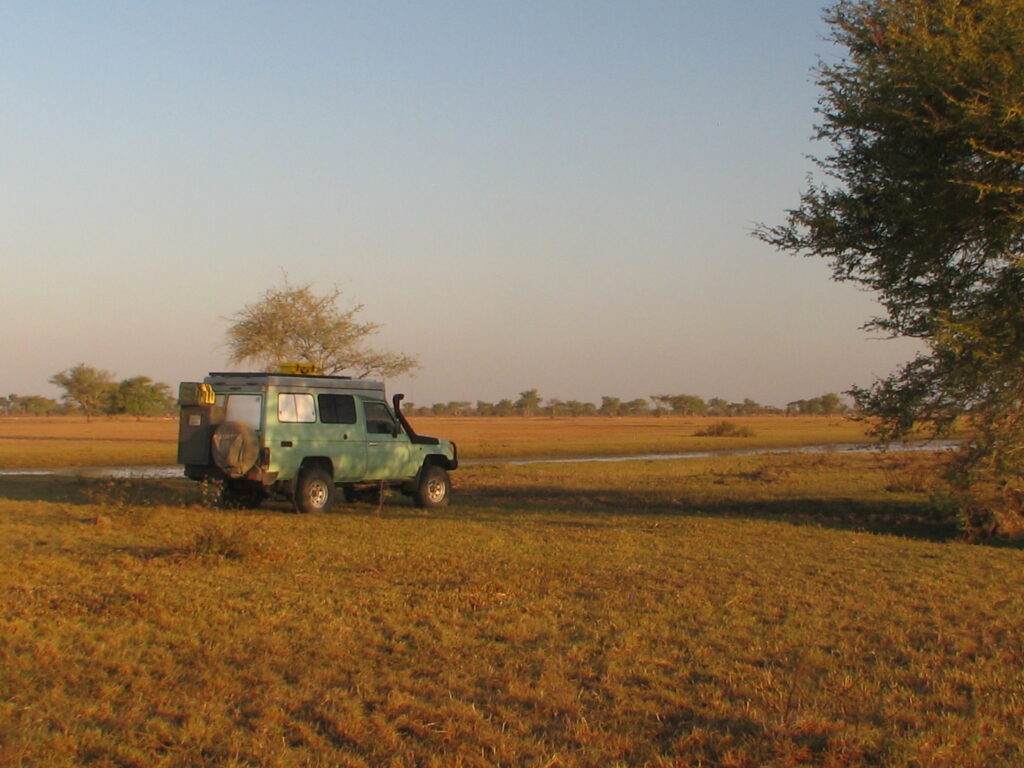
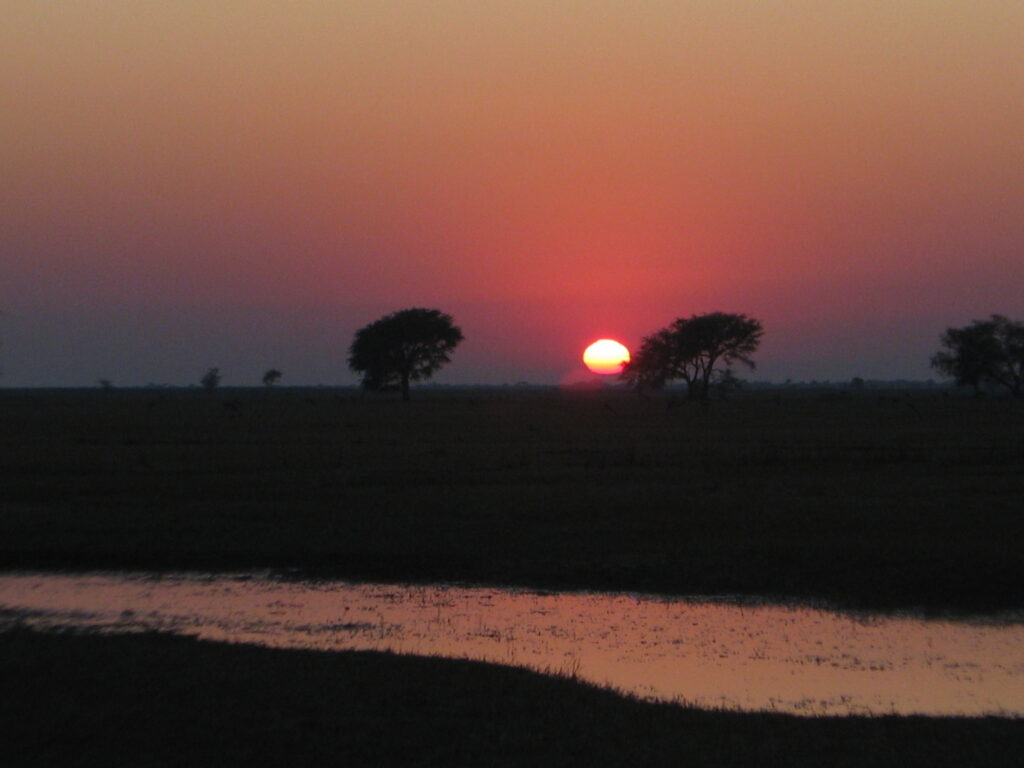
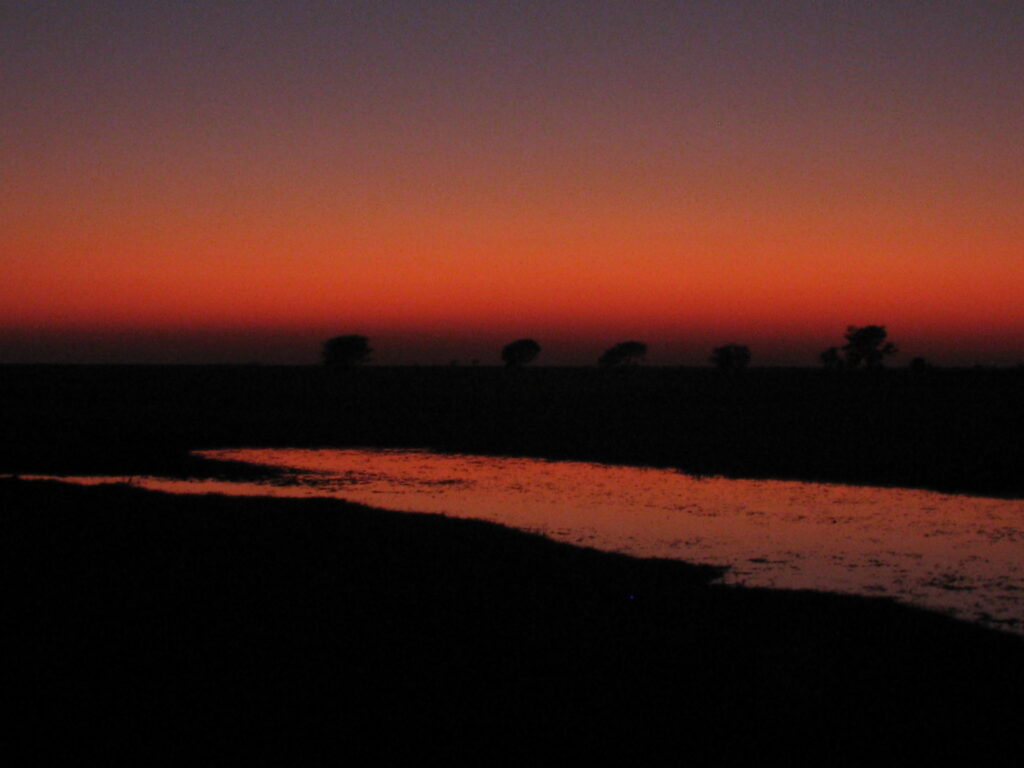
Unbeknownst to me, it turned out that the fishermen from one of the local villages located inside the Park used this area to launch their boats from a small channel about a 100 meters away. After setting up my campsite I walked over and talked to one of them and arranged for a boating trip into the marsh the following day. Here’s a composite video of my excursion out on to Kafue Flats in a very small and unstable wooden canoe – if you are so inclined, sit back and enjoy the canoe ride with me:
Lochinvar National Park Kafue Flats composite video (15 minutes)
After my morning canoe ride I decided to change campsites for a change of scenery. I drove to the other side of the Park to the edge of Chundu pool, which is the enormous pool – lake, really – we boated out to, as seen in the video above. However, the one site with a very limited view of the open water was strewn with trash from the local fishermen that use the spot as a harbor. I decided it was too unpleasant and there were no other camping options since it was too long a drive to get back to my previous campsite, so I left the Park.
Overall, while Kafue Flats was exceptional in many ways and my canoe ride was quite memorable, the Park had little else to offer. There was very little wildlife to see, other than the lechwe and the wetland birds – which were great – and there were zero facilities for campers. I saw a couple of baboons and vervet monkeys and I heard a spotted hyena and that’s about it. In retrospect, I’m not sure it was worth the long drive to get here on rough dirt and gravel roads for a single night and a 3 hour canoe trip. Oh well, live and learn.
I opted to drive halfway to my next destination, Kafue National Park, to save me a very long drive the next day, and “wild camped” along the way. My iOverlander app directed me to a “flat spot behind a tree”, which was sort of true, but also put me on some private property with an undetermined owner or owners, so I went to the first house enountered off the road at that point and asked for permission. The person didn’t speak or understand a word of English so I had to use sign language to indicate my request. I felt like Merriweather Lewis communicating with the native Americans on his journey across western North America in 1803. Ultimately, I think I got permission, so I gave the person 50 kwacha, or the equivalent of $2.50 USD, which doesn’t sound like a lot but is in fact a lot here, and went to my chosen flat spot behind the tree. Later, after dark, a couple of other women with a small child showed up and tried to communicate in their native language. I determined that they too wanted some kwacha, so I ended up given them each 50 kwacha and the child a box of crayons and drawing booklet and they went away happy. No other visitors after that, thank goodness.
Next morning, I continued on my way and had an interesting pontoon ferry crossing of the Kafue River, as shown here:
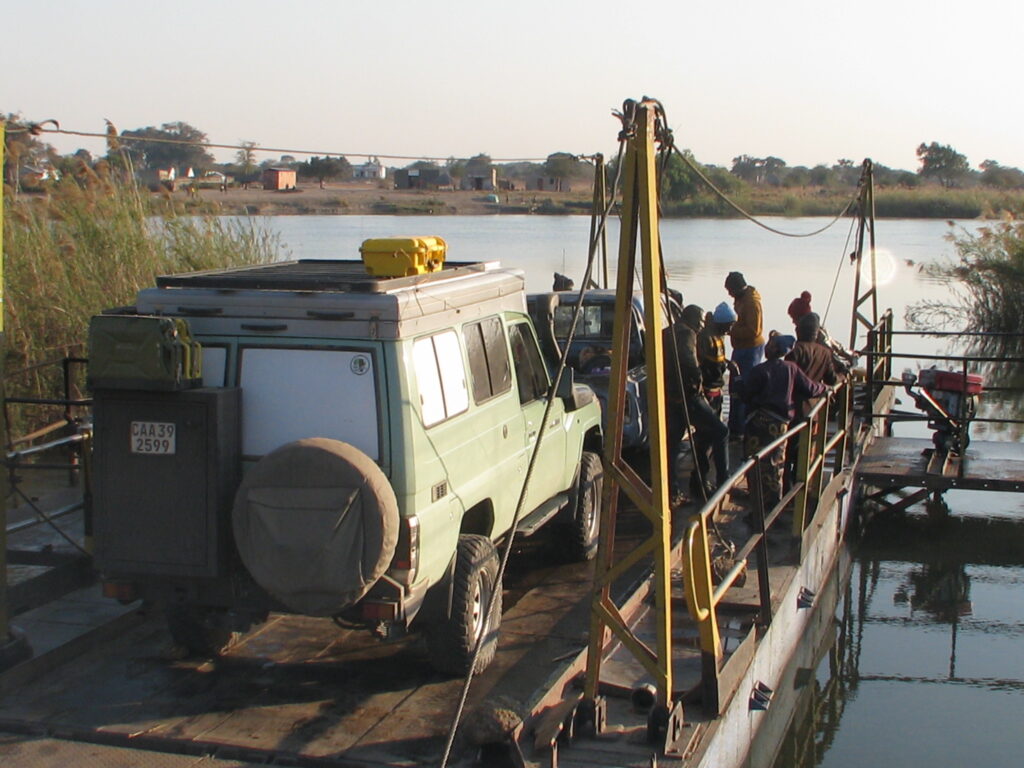
Eventually, after driving some distance on mostly pretty decent gravel roads and one sketchy dirt track leading to my final destination, I made it to KaingU Safari Lodge and my campsite. More on that in the next post. Cheers.

love starting my day reading your blog and and watching your videos. thanks for the updates. carry on!Rick
Will do!
Any crocodile in those waters?
Yes, it is safe to say that there are crocs in just about all waters, except perhaps the very fastest flowing, but even then I have seen them. So, always assume there are crocs. No swimming unfortunately. Love ya.
I love the sunset! Sounds like an interesting park adventure even with the varied use of the park. I’m glad you found a good recipient for some of your crayons.
Happy travels!
Yes, great sunset and marsh canoe trip, but otherwise didn’t care too much for the Park. Will look for more needy kids in the right context to give out more pencils and crayons. Cheers.
Donna came for an overnight and we read your blog and watched the video together. Eyes still not great. I was also wondering if the crocks are everywhere. Loved the boat ride through the marsh..
Those fish didn’t look too healthy!
Love you. Joan
Sorry to hear your eyes aren’t 100% yet. bummer. Yes, crocs are pretty much everywhere, or at least you must assume they are. Makes swimming quite a risky proposition. Fish were fine, but I wonder how they look by the time they get to the market. However, I understand that most are smoked in the fish camps and then packed and sent to market, so they are dried, which should be OK. Love ya.
Well, I guess you have to take some bad with all that good.
Beautiful sunsets Kevin! I know you miss Nancy, but selfishly I’m glad she is back! So fun to be hiking and goofing off with her again (and all that time off from hiking has NOT slowed her down!). Continue your great adventures, but know we’ll be so happy to have you back home too! Cheers!
Yes, I miss her terribly already, but she was ready to return from the bush. Glad you have engaged her back into hiking, which she missed terribly. Cheers!
Beautiful sunrise. That was an awesome canoe ride too. I definitely didn’t expect it to open up into that big lake! Glad you were able to switch boats with the crocodiles around!
That’s unfortunate to hear about all the human interference in the park but I’m glad you got an interesting boat ride out of it.
Yes, the boat ride was the one real highlight of that Park, along with the spectacular sunset from my campsite. Crocs are less a problem for boats than hippos. Cheers. Would love to get you over here some day.
Oh right, forgot about hippos. That makes sense. Yeah it would be amazing to join you at some point if we get a chance.
Indeed, let’s try to figure out how to make that happen next year or the one after.